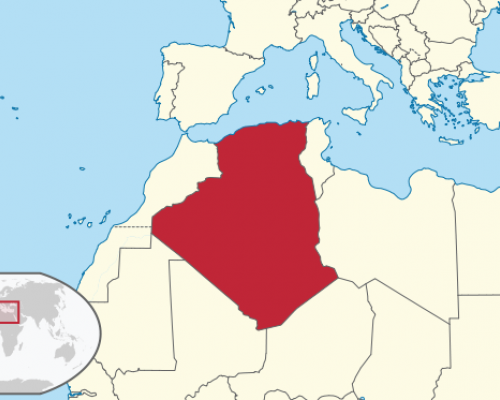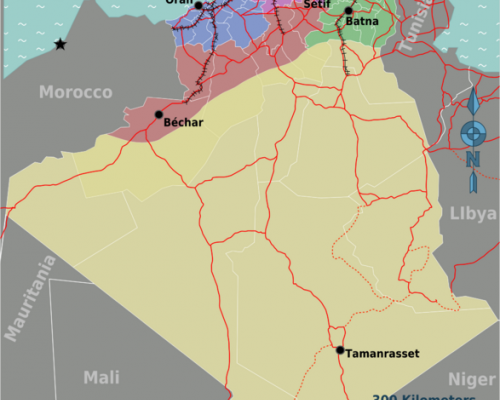Algeria - ensure you are aware of the local situation before travelling off the beaten track
Algeria has been quiet for a long time but recently security is becoming more and more of an issue than it ever has been. It does not get much media coverage in the international media but that does not mean to say that the threat has gone away.
What's been happening in Algeria recently?
Whilst the country has come a long way since the civil war in the 1990s, there are still occasional attacks against government institutions (buildings, police forces, etc). Such attacks include bombings, false roadblocks, kidnappings, and ambushes , particularly in rural areas such as the Kabylie region of the country. Sporadic episodes of civil unrest have also happened recently.
In the south of Algeria, there is the threat of bandits as well as an al Qaeda-affiliated terrorist group (AQIM).
Kidnap in Algeria
Kidnap is prevalent in Algeria and in January 2013, Al Qaeda captured several foreigners including British and Americans. Tamanrasset is safe to visit due to police & military presence but only for essential travel. However, you should not attempt to travel in the Sahara desert without a local guide taking adequate security precautions.
Travel on some routes in the Sahara is only recommended when in military/police-escorted convoys for safety. Travel overland to Mali or Niger if definately not recommended at present!
According to reports yesterday, a video was released which purportedly showed the beheading of French national, Herve Gourdal, who was kidnapped in Algeria on 21 September.
Gourdal was abducted by Jund al-Khilafah, while hiking in the Djurdjura National Park in Tizi Ouzou province, located east of the capital, Algiers. This terrorist group is not known to have carried out any similar such actions against Western nationals in Algeria prior to this incident.
Although the number of foreign nationals kidnapped in northern Algeria is low, the general threat of kidnapping is high. This threat is considered much higher outside major towns in the provinces immediately east of Algiers, known as the Kabylie region, which encompasses Tizi Ouzou province. RPS recommends reading and listening to local advice and be clear of where you are going, the risks and whether you need to reconsider your travel plans.
It remains unclear if this incident is isolated or if it is the beginning of a new trend; however, given the high and ongoing threats of both terrorism and kidnapping in Algeria, further incidents cannot be discounted.
Travelling in Algeria
Travellers in northern Algeria, particularly in provinces next to Algiers and extending east towards the Tunisian border, are advised to ensure they increase their security precautions and to be vigilant at all times. RPS advises air travel between urban destinations rather than road travel if feasbile.
If you are travelling to Algeria for work or pleasure, these are some of the towns of interest that you may consider visiting. Ensure you know where they are and what the local security risks are when you travel there. Talk to locals before setting off and ensure that, although the places may be lovely, the security situation has not changed there since you read your guidebook.
Algiers — With nearly 3 Million inhabitants Algiers is the Capital but also political and cultural centre of Algeria. Beautiful mix of white-washed French buildings, narrow streets of the UNESCO listed Casbah, beautiful parks and the magic Bay of Algiers.
Annaba — A town with 200.000 inhabitants located in the east of the country next to the border of Tunisia. Annaba enjoys nice colonial building, a very nice church on a hill built for Saint-Augustin and amazing beaches. Think about avoiding road travel and go by air.
Batna — A modern city in the Aures region, in the East of Algeria. Nearby is Timgad, one of the most beautiful Roman ruins in the world, as well as the Ghoufi Canyons.
Bechar — Small city in the Sahara, not far away from the Moroccan border.
Constantine — An impressive city in the East, full of history and traditions, on huge and dramatic cliffs and crossed by various bridges.
Oran — Biggest City after Algiers also called second Paris by Algerians, with many impressive buildings from the colonial time. Oran is the city of partying and leisure with its beaches and nightclubs and the worldwide famous Raï music.
Sétif — South of Kabylia with quite moderate temperatures and occasional snow falls in the winter. Near can be found Djemila, a beautiful ancient Roman city.
Tamanrasset — Largest town in the South and starting point for expeditions to the Sahara and the Hoggar mountains. Expeditions to the Sahara should be considered with caution at present.
Bejaia — Second largest city in Kabylia, with an amazing coastline, gorgeous beaches and nice architecture, a castle can be visited on the Gourara mountain.
Ghardaia — A UNESCO listed city where the desert starts with its marvellous Mzab architecture and its art.
Tipaza — A very nice city next to Algiers with beautiful beaches and Roman ruins next to the sea.
Mostaganem — A very touristy city next to Oran, known in the whole country for its culture and its numerous and very nice beaches.
Tlemcen — A sophisticated city full of history, the most Moorish city of Algeria with its mosques and Muslim architecture.
Contact RPS for more information on travel to Algeria [email protected]
With thanks to Red24 for local information.



